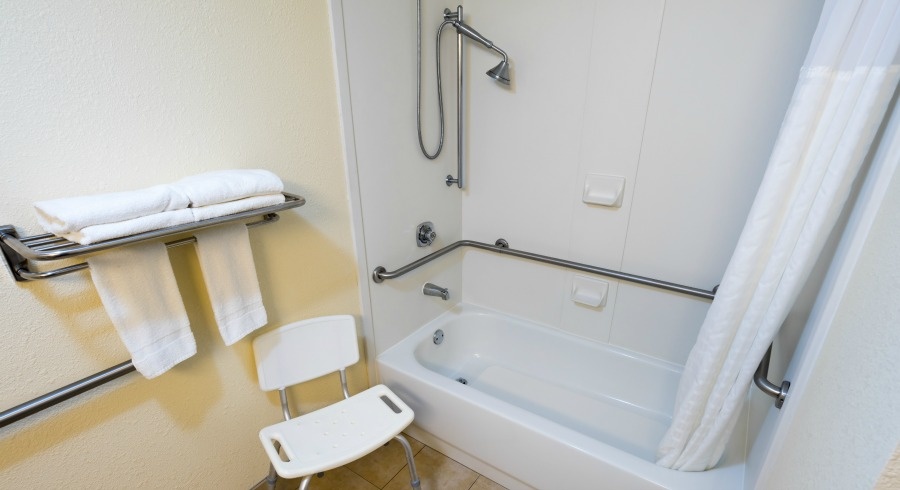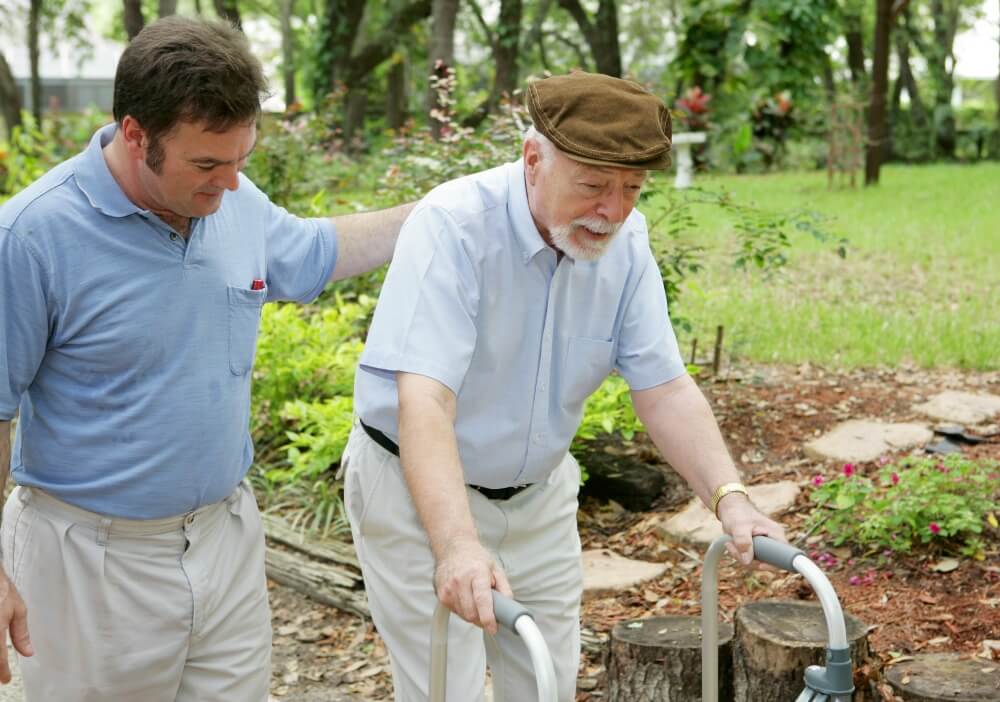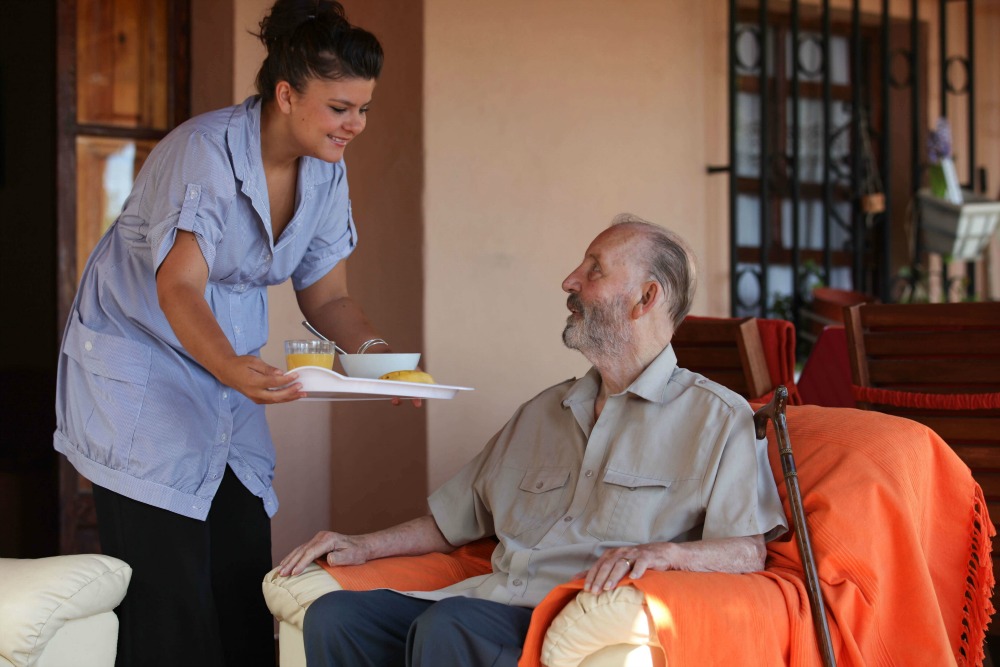How Can I Create an In-Home Care Plan on a Budget?
In-home care is an expense that many individuals and families have not necessarily planned for. If your aging parent or loved one has come to the point in their life where they need in-home care, don’t panic about the cost. Here are four ways to help alleviate the stress and the financial strain of providing in-home care for your loved one.
![]()
Ask your family members for help
Ideally, the financial burden of taking care of a parent should not rest solely on the shoulders of one sibling if there are multiple siblings in the family. Healthcare professionals say that the most successful care plans are those contributed to by an entire family, not only financially but logistically. Of course, family relationships that are strained can cause difficulty in coming together to care for a parent. Children should all put forth their best effort to contribute what they can to the plan of care. Some children may be unable to contribute much financially, but these individuals can hopefully assist in the care plan in other ways.
Prepare for rising costs
As certain conditions progress and worsen, it is likely that your parent or loved one will require more services as time goes on than they did when they first started receiving in-home care. Be in constant communication with your care provider to identify certain needs that may need to be met in the near future. Be aware that the bill you currently pay for in-home care may increase, and try to plan ahead and budget as necessary for those changes.
Know your insurance or Medicare policy terms
Medicare and insurance coverage can be confusing. Be sure you fully understand your care agency’s terms and conditions when it comes to Medicare before making the decision about in-home care. Also be certain that you know what your insurance policy or Medicare plan will cover when it comes to elder care. Knowing what costs will be covered and what will not be will limit any confusion or unwelcome surprises down the road.
Consult with an attorney
In order to preserve and protect assets for in-home care, families should set up a consultation with a trusted, reputable estate planning attorney to ensure that they are making the best financial decisions regarding their elderly loved one. Most people think of estate attorneys as only assisting in writing wills, but in reality they provide much more value than just that. Estate lawyers can help you and your loved one create a long-term financial plan that best suits their needs and can even help advise short-term care decisions.
Be open with caretakers about financial burdens
Your in-home caretaker should do everything he or she can ease the burden that home health care takes on individuals and their families. When a person requires in-home care for an extended period of time, families often worry that their funds will run out. Be sure to understand your in-home care agency’s flexibility before signing a contract or making a commitment.
What Home Modifications Could Help My Parents Maintain Their Independence Longer?

As we age, living independently in our own homes can become risky to our health and well-being. Steps that were once climbed without a second thought now become nearly impossible to navigate. Cupboards once opened every day seem far out of arm’s reach. Showers now become a falling hazard instead of part of a daily routine.
Just because parts of our homes are no longer suitable for independent living does not mean that those parts cannot be modified to better meet the needs of our elderly loved ones. With advancing technologies, more options than ever are available for altering certain aspects of a home to make it more comfortable and accessible for aging parents and family members.
Some of the many possible home modifications to make aging at home easier include:
- Ramps to Exterior Doors: Ramps make it easier to enter and exit the home, whether your loved one uses a wheelchair or not. Avoiding stairs helps prevent falls.
- Widened Doorways: Should a wheelchair or a walker be necessary, wider doorways make moving room to room within the home more comfortable.
- Handrails on Stairs and in Hallways: While most staircases have handrails on at least one side, adding rails to both sides and putting them along hallways within the home ensures that your loved one has a safe, secure grip wherever they go.
- Stair Lifts: If the time comes where stairs become hazardous to the patient’s health, stair lifts are a great option for access to all levels of a home.
- Remote Controlled Recliners: Many elderly people do not have the arm strength to push or pull levers on recliners but still need the option to put their feet up. Remote controlled recliners allow patients to maneuver lounge chairs at the push of a button, with many models even elevating the person nearly to their feet when needed.
- Remote Controlled Switches: Flipping light switches and fan switches seems like no big deal for most of us, but when an aging individual has to cross an entire room to turn the switch, it becomes a hassle. Remote electrical switches allow you to connect a remote to these and other everyday household appliances so that they can be powered on and off from a chair, a bed or anywhere in the home.
- Shower Chairs: Standing in the shower can be dangerous for elderly people, so shower chairs provide a safe alternative that still allow patients to shower on their own.
- Bathtub Doors: Especially fitting for wheelchair patients, some bathtubs allow for new tubs to be molded over the existing one to include doors for better maneuverability.
- Bathroom Grab Bars: Bars can easily be installed near toilets, bathtubs, showers and sinks to allow secure grips anywhere in the bathroom. These can also be disguised as towel racks.
- Lowered Drawers and Cabinets: Aging people can have trouble reaching for household items in high cabinets or drawers. Simply installing them at lower levels, or putting needed items in lower drawers or cabinets, will allow for easier reach.
- Lever Handles on Doors and Cabinets: Patients with arthritis or weakened grips can have issues with turning everyday round handles, so these modified handles can provide easier grips.
Many of these adjustments in the home can be made by a family member or friend, while others may require a home visit by a contractor or handyman.
The National Association of Home Builders (NAHB) offers many resources on how to best make home modifications for aging loved ones. NAHB partnered with AARP to create Certified Aging in Place (CAPS) training for remodelers and contractors who can help families and caretakers make structural changes that can keep homes safe for aging homeowners. Visit NAHB’s website for more information on finding a CAPS certified contractor or handyman.
For more information about keeping your aging family members safe at home, and about how other home modifications can be made, contact us. Let us help you care for your loved one and allow them to remain in the home.
What are the Best Medical Alert and Security Systems for Senior Citizens?
For some senior citizens, the availability of safety monitoring devices and medical alert systems means that they can maintain their independence by staying in their own homes safely.
Since fall-related injuries are the number one cause for both death and hospitalizations in those 75 and older, families are often concerned that their older loved ones will fall and be unable to call for help.
Not only are fall-related medical alert systems available, but systems are available that include in-home health monitors, fitness trackers, movement sensors, GPS trackers, activity monitoring, home security services and more, in order to fit the needs of elderly people with specific needs. AARP offers a comprehensive list of considerations when making a purchase decision about a health or security-related monitoring system.
Technologies are available that allow elderly people to have help sent at the push of a button should an emergency occur. These devices can be used by themselves or in conjunction with in-home health care as part of a comprehensive care plan for your aging loved one.
Top Ten Reviews conducted a search for the best medical alert systems of 2017. Their search criteria were based on range, response time, affordability and consistency of signals. Each of the medical alert systems on their list provides 24/7 call monitoring, flexible contracts and nationwide coverage. These medical alert devices also have excellent battery life, quick response times, minimal fees, maximum comfort and durability. After 85 hours researching and 40 hours of testing many safety and medical monitoring devices, Top Ten Reviews produced the following rank of medical alert systems for seniors:
2. Life Fone
4. Alert1
5. Rescue Alert
6. Life Station
8. Mobile Help
9. ADT
Many of these alert systems are equipped to handle not only medical concerns but security and safety issues as well.
Keep in mind, the best security systems and alert devices for the elderly won’t always be the same as systems designed for younger adults or families. Elderly patients may have dementia, Alzheimer’s, aphasia or other complications which may hinder their ability to use certain security systems.
Some of the possible features of home monitoring systems for the elderly include video surveillance, fire and carbon monoxide alarms, sensor lighting, and door and window alarms—all aimed at making your older loved one’s home as safe and secure as possible.
For more information about how to integrate medical alert or safety and security devices into your loved one’s care plan, contact us. We’ll be glad to help guide your decision about which system will give you and your aging loved one the most peace of mind.
How to Talk to Your Aging Parent About In-Home Care
We all need a little extra help sometimes, and as we age, that need for assistance becomes even greater. If you have an aging parent or loved one, you know that getting them the help they need can be difficult. If your parent needs more assistance than you or your family alone can provide, perhaps in-home care is the solution. Bringing this up and making your parent understand this, however, can be a challenge. Here are a few ways to start and continue the conversation about in-home care with your parent.
![]()
Gently express your concerns.
Tell your parent that you worry about them being alone in their home or being able to fully care for themselves. Be understanding to any resistance or fears they express, and acknowledge that this is a difficult decision. Tell them that you feel this change would be best for both them and you. Cite specific examples of behaviors that concern you or tasks that would be made easier for them with another set of helping hands. If your aging parent still lives with a spouse, point out that having a caregiver would be beneficial to both spouses in the home.
Admit your inability to care for them on your own.
If worrying about your loved one keeps you awake at night or makes you unable to be fully present at work, tell them that in a considerate way. Ask them if they would be willing to lighten your load by allowing an in-home caregiver come and check in on them weekly or even every other day. Assure them that immediately hiring a full-time in-home caregiver might not be necessary and tell them that you can begin by asking a caregiver to come in once a week. Explain that if they were to fall or suddenly become ill, having another caregiver on call would give you peace of mind. A caregiver could drive your parent to appointments, help prepare meals, remind your loved one to take medications and assist with house chores. Tell you parent that you, too, need help in assisting them with these tasks.
Tell them they can give it a trial run.
To begin this process, tell your loved one that you will bring in a caregiver on a short-term basis. If your parent feels uncomfortable or is unhappy with the care they are getting, ask them to communicate that to you so that you can look into other options for them. Alternatives could include an entirely new caregiving agency or simply a different individual caregiver. Tell them that you will solicit recommendations from their physician or other people that they trust. Try to involve them as much as possible in the decision-making process so that they feel their input is valued.
Stress their own independence.
Many people feel that asking for help is giving up the very last bit of their independence or control when in fact, it’s just the opposite. Let your parent know that having an in-home caregiver is a way for them to maintain their independence. Having in-home care means that your parent will not immediately have to move in with you or another loved one and that they will not have to make the transition into a nursing home. They will have quality, one-on-one care and assistance with daily tasks that have become difficult for them or that now take them too much time to complete. Listen to their thoughts and concerns and be sure to address them as best as possible. If you can’t, find someone who can so that your parent can rest assured and feel comfortable making this life-changing decision.
What Role Does Medicare Play in Long Term Care?
Medicare is an important program to the elderly citizens in the Ohio Valley. However, there are some common misconceptions surrounding what Medicare will actually cover when it comes to long term care and other senior care needs.
![]()
Many long term care options revolve around non-medical support services. Since so much of long term care is non-medical, Medicare is often far less help than clients and families originally think.
Here is what Medicare does cover:
- Care in a Long-Term Care Hospital
- Medical-Related Home Health Services
- Physical therapy
- Speech and Language Pathology Services
- Occupational Services
- Hospice and Respite Care
- Short Term Skilled Nursing Care in a Skilled Nursing Facility
Medicare does NOT pay for:
- 24-Hour-a-Day Care at Home
- Meals Delivered to Your Home
- Homemaker Services
- Personal and Custodial Care
- Long Term Stays in a Nursing Home
- Transportation Assistance for Appointments and Errands
Often, we see or talk to people that confuse Medicare with Medicaid. While both are government programs, they are very different.
Medicare is governmental program that ensures that our elderly citizens have access to healthcare beyond their working years when they need it the most.
Medicaid is a governmental program put into place so that those living around the poverty line and below are able to access healthcare services.
If you were counting on Medicare to help pay for your long term care, please click below to talk to one of our staff. There’s no need to be anxious. There are many ways to be creative with providing quality care and stay within a reasonable budget.
Get In Touch with an In-home Care Specialist
How Can my Life Insurance Policy Help Pay for Long Term Care?
It surprises most seniors to learn that their life insurance policy is considered an asset when they are trying to “spend down” to qualify for Medicaid.
Though life insurance is meant to be spent after death or to be left to those we love, governmental organizations considers any policy worth more than $2,000 to be an unqualified asset that must be liquidated or counted against the individual when considering Medicaid and other financial assistance.
Some seniors end up letting their policy lapse or surrendering them for their current cash value, but there is a little known third option that often solves two problems at once for someone who needs help financing their long term senior care. It’s called the Long-Term Care Benefit Plan.
How Does the Long-Term Care Benefit Plan Work?
The Long-Term Care Benefit Plan takes your in-force life insurance policy and transforms it into a pre-funded financial account that will pay-out a dedicated monthly benefit to help pay for the policy holder’s long term care needs. However, unlike their insurance policy, a long-term care benefit plan account is a Medicaid qualified asset because the conversion process moves the ownership from the original policyholder to a named benefits administrator.
Who Owns or Manages a Long-Term Care Benefit Plan?
The benefits administrator is responsible for making the payments to the person’s in-home care, nursing home, assisted living facility, hospice care, or other long term care service. It is important to note that the Long-Term Care Benefit Plan disbursements can only be used to pay for long-term care and no other need.
What are the Advantages and Disadvantages of the Long-Term Care Benefit Plan?
Here are the advantages of the Long-Term Care Benefit Plan:
- there are no monthly premium payments
- any type of life insurance is convertible (whole, term, or universal)
- disbursement amounts are adjustable by length of payments (You would get double the monthly disbursement over 12 months than you would get over 24 months.)
- monthly disbursements don’t count against Medicaid coverage
- all dollars are “private pay”, and the owner still gets to maintain a special fund set aside for funeral expenses.
Long-Term Care Benefit Plans may seem like it would be a great option for anyone needing to pay down their assets, but that isn’t always the case. In the case of smaller policies for $10,000 or less, a person is normally better off keeping the policy or exchanging it for their cash value. On the other end of the spectrum, if you have a policy with a large cash value built in, you would normally be better off taking the cash value rather than converting.
What is the Difference Between In-Home Care and Assisted Living?
As residents in the Ohio Valley get older, more families are beginning to have conversations surrounding senior living and what to do when our elderly family members begin to lose the ability to do some of the day-to-day activities required to live independently.
Two of the most appealing options usually under consideration are in-home care and assisted living facilities. Because these two options represent the highest level of independence, they are often seen as directly competing with each other, but that is not necessarily the case. There are situations where each option offers the best level of care and quality of life for the client.
When are Assisted Living Communities the Right Choice?
Assisted living facilities are senior communities that allow elderly residents to exercise independence in their social life while offering staffed support in activities like meal preparation, bathing, dressing and transportation.
Assisted living facilities are a great senior care option for individuals and families who do not have a strong desire to stay in their home, do not need a high-level of individual care, but would benefit from the social aspects of community living as well as the 24 hour monitoring.
Get Your Free Guide to Payment Options
When is in-home Care the Right Choice?
In-home care professionals provide companionship, housekeeping, bathing, food preparation, transportation and other non-medical services on an hourly basis.
In-home care is provided by non-medical care professionals that they are not permitted to administer medication or perform other medical care normally administered by a nurse as part of a skilled care relationship. However, they are able to offer medication reminders.
In-home care is a great senior care option for elderly clients who want to stay in their home for as long as possible but require some assistance in order to remain independent. It provides individual care when it is needed in the areas where it is needed most.
An in-home plan of care can range from 24/7 staffing to having an aid stop in a few times a week for meal prep, bathing, housekeeping, errands, safety, and companionship. One of the perks of in-home care is that individuals and families can work with the agency to create a plan of care that maximizes coverage and care around the client’s budget instead of a flat rate, one-size-fits-all solution.
Costs and Payment for In-Home Care vs Assisted Living Facilities
Quality in-home care and assisted living facilities are largely private pay options. There are situations where things like long term care insurance and veteran benefits may help subsidize the senior care, but there is often a balance left over that must be paid out-of-pocket.
Assisted living facilities in Wheeling, Steubenville, Cambridge and across the Ohio Valley range from $1,500 per month up to $6,000 per month depending on the care and amenities of the facility. Nursing home care can be even more expensive.
In-home care ranges from $15 to $25 per hour, depending on the case and care agency.
How can Reverse Mortgages Help Make Long Term Care Affordable?
Reverse mortgages are an often misunderstood tool that seniors can use to make home modifications, pay for long term care, and provide senior care that would otherwise be unaffordable.
Reverse mortgages aren’t the best option in every situation, but its ability to provide much needed dollars without immediate payment offers relief to many elderly homeowners.
Quick Facts
- A homeowner can never owe more than their home’s value.
- A homeowner will never be forced out of their home.
- The loan becomes due after the last borrower sells the home, is out of the home for more than a year, or passes away.
- Reverse mortgages do not affect Medicare or Social Security Benefits, but they may impact Medicaid and some veteran benefits.
- A homeowner can borrow between 20%-70% of their home’s value.
- There are no restrictions on how the money from a reverse mortgage can be used.
What is a Reverse Mortgage?
A reverse mortgage is a loan against your home’s equity. The lending bank will make payments in a single lump sum, monthly installments, or as a line of credit. The loan is paid back when the last borrower (if a couple signs together) sells the home, is out of the home for over a year, or passes away. In most cases, the lender is not paid back in installments, but rather through selling the house. The lender is paid back the full loan amount plus the accrued interest.
Although there are several reverse mortgage options, a Home Equity Conversion Mortgage (HECM) is an option that many find most useful.
When Should You Consider a Reverse Mortgage to Pay for Long Term Care?
Whether or not you should consider a reverse mortgage to help pay for senior care depends a lot on how your situation aligns with the way reverse mortgages work.
Single or Married in Poor Health: If you are single and in poor health, you will most likely be better served to sell your home and take the lump sum to help pay for long term care.
Single or Married in Fair Health: If you are single or married in fair health but one or both members need some support to stay in the home, a reverse mortgage could provide the financial boost needed to pay for long term care since the loan will not need paid until after the last borrower passes away or moves out of the home for more than 12 months. Sometimes reverse mortgages are utilized when one member of a married couple needs skilled care and the other member can maintain a level of independence. In this case, a reverse mortgage allows for the more independent member to stay in the home while providing the financial means to care for the person needing more attentive care.
What are the Requirements and Recommendations for Reverse Mortgages?
Age: Seniors must be at least 62 years old before they qualify for a reverse mortgage, but there is no maximum age limit. Older seniors are eligible for higher amounts.
Health: There are no health requirements or medical exams necessary for a reverse mortgage since the structure of the loan requires that repayment be made after the home is no longer a consideration and the payment of the loan is found in the house’s equity.
Financial Health: Financial stability is a consideration in obtaining a reverse mortgage. Since the borrowers are not making monthly payments, lending institutions instead focus on the borrower’s ability to maintain the home. If this ability is questioned, the borrower may be required to set aside a portion of the proceeds to cover these costs.
Mortgage Debt: The reverse mortgage must be the primary debt against the house. However, it is common for there to be remaining mortgage debt at the time of the reverse mortgage. In these cases, a portion of the reverse mortgage is used to pay off the remaining mortgage debt.
How Does Long Term Care Insurance Work?
Long Term Care Insurance (LTCI) began just over 30 years ago, so it is a relatively new product in the insurance market. While only around 8% of Americans have purchased LTCI, rising life expectancies and senior care costs have interest in LTCI at an all-time high.
Long Term Care Insurance pays a specific daily benefit over a specific amount of time once certain conditions have been met, often fulfilling conditions like a policy holder’s inability to dress or care for themselves, an inability to keep up their home, or cook and prepare meals.
LTCI is meant to bridge the gap between quality long-term care and the financial shortfalls that often occur with prolonged care plans. According to a Harvard University study, 72% of Americans cross the poverty threshold after just one year of care.
The problem is further complicated because long term care is normally not covered under private medical insurance. Medicare only pays for skilled care after a three-day hospital stay and excludes custodial care, and the Medicaid only covers nursing home care after a patient’s assets have been depleted completely.
In recent Cost of Care Surveys, private nursing home care costs average $83,950, while 40 hours of in-home care averages approximately $57,000. LTCI is meant to offset these costs for the patient and their family whether the need for care is short term or long term.
The Benefits of Long Term Care Insurance
Long Term Care policies aren’t cheap, although those costs can be mitigated by purchasing policies at a younger age, and experts agree that they aren’t for everyone. No LTCI policy should exceed more than 7% of your annual income.
However, for the right person, a good LTCI policy can provide a lot of peace of mind and financial assistance during times that most families are left looking for creative ways to pay for the long term care that is needed.
A quality LTCI policy will do the following:
- Protect savings and assets
- Help maintain a policy holder’s financial independence
- Make professional care affordable
- Provide options for the kind of care provided
- Expand the range and depth of services available
LTCI premiums are calculated based on a few different factors.
Age and Health at the Time of Purchase: Just like any insurance, premiums are usually cheaper for younger policy holders as well as those who are healthier at the time of purchase. Most companies offer policies for clients between the ages of 18-85.
Benefit Period: The benefit period is the amount of time that the policy will pay out for long term care. This is usually stated in years.
Elimination Period: The elimination period is very similar to a deductible in health insurance. It is the amount of days that must be paid for before the LTCI policy kicks in. This is usually between 30-180 days. Longer elimination periods will lower the cost of premiums because it lowers the amount of care that the insurance company will ultimately be responsible for since many long-term care situations are shorter in duration.
The National Association of Insurance Commissioners recommends only purchasing policies from reputable companies that offer the following:
- A minimum of one year of nursing home health care coverage
- Coverage of Alzheimer’s disease and other degenerative diseases
- A guarantee that your policy won’t be canceled because of age or deterioration in physical, emotional, or mental health
- A 30 day free look period
- No hospitalization requirement to receive nursing or home health care
How Much Does Senior Care Cost?
The baby boomers are starting to retire, and America’s senior population is expected to double in size at a rate of 10,000 seniors turning 65 each day for the next 20 years according to the National Institute of Aging (NIA).
With the average age of the Ohio Valley’s population continuing to rise ahead of the national averages, senior care and the costs associated with caring for our loved ones is set to be an important topic for the foreseeable future. The good news is that there are a wide range of options available.
The real question often comes down to, “How much is senior care going to cost?” Of course we want the best possible care for ourselves or our loved one, but at the end of the day, we must be able to pay the bill.
While there are a lot of variables that come into play when considering the cost of elder care, there is hard data that can be helpful as you begin to map out your options. Below, we have included a chart that shows some of the indexed prices and national averages according to A Place for Mom’s 2015 Senior Living Price Index.
| Care Type | In-Home Care |
Nursing Homes (semi-private) |
Nursing Homes (private) | Assisted Living (private) |
| Hourly Rate | $14-$24 | NA | NA | NA |
| Daily Rate | $112-$192 | $181 | $205 | $90 |
| Monthly Rate | $3,360-$5,430 | $5,430 | $6,150 | $3,823 |
Each of these options presents its own list of pros and cons.
| Pro | Con | |
| Nursing Home (semi-private) |
|
|
| Nursing Home (private) |
|
|
| Assisted Living (private) |
|
|
| In Home Care |
|
|
As is the case with most things, there is no one-size-fits-all option with senior care. Each case is unique to its own situation and needs of the client, their families, prior financial planning, and budgets.
However, those variables only begin setting the rules. A good in-home care agency, assisted living facility, or nursing home will not try to sell you just their services but will begin to walk you through your options and help to guide you toward a path that is best for the client, their family, and the value of each of their dollars.
If you would like to talk to one of our team members at IC Care and have a conversation about your own unique conversation, please click below, fill out a short form, and someone from IC Care will reach out to you.
How Should I Choose an In-Home Care Agency?
Choosing the best in-home agency to care for yourself or a loved one seems like a daunting task during an already emotionally stressful time. There are often feelings of loss or guilt that go along with making the decision, but there are ways to find the right in-home care agency without feeling lost and drowning in […]
Is In-Home Care Right for Me?
The number one question we receive when people call looking for answers is whether in-home care is right for them. This is a tricky question sometimes, but there are some general guidelines that we follow to make an initial assessment prior to sending an RN out to speak with the client and family. If you […]
What are the Different Types of Senior Care?
Independent Living Communities Senior independent living communities are a great senior living option for those who need little supervision but do have a few medical problems that require care or monitoring. These independent living communities provide fully furnished apartments that vary in size and amenities. An independent living community will also offer residents meal plans […]
3 Things to Know About In-home Care for Veterans
When it comes time to make in-home care decisions for yourself or a loved one, it is a good idea to educate yourself on all of the available options for your particular circumstance. This is, perhaps, most clear when it comes to senior care options for our veterans. Here are our top 3 things to […]
What is the Aid and Attendance Benefit for Veterans?
The Aid & Attendance pension is a wonderful benefit to veterans, spouses, and widows of qualified veterans. Though the process for qualification can often appear cumbersome to families, there is no reason to pay someone to help fill out the Aid and Attendance Benefit. In fact, the Veteran’s Administration prohibits any agency or entity for […]
What Are My Payment Options for In-home Care?
When considering in-home care, there are various options and resources for funding. In many cases it is even possible to use multiple sources together. The following is a summary of the various options available for paying for Ohio Valley in-home care: Private Pay Private pay rates can vary from agency to agency. Keep in mind […]
How Important is Gratitude in Senior Life?
Gratitude is one of those tricky things in life that seems so natural when things are going well and so elusive when they are not. However, studies have shown over and over again that maintaining a foundation of gratitude is one of the key ingredients to a long, healthy, and fulfilling life. For senior citizens […]
How can At-Risk Seniors Escape Flu Season?
Flu season affects between 5 to 20% of the population each year. With over 100,000 people hospitalized and 36,000 flu-related deaths, influenza, or the flu, is a serious medical issue that is often underestimated until it is too late. Seniors who are infected with the flu virus are especially susceptible to exaggerated symptoms due to […]
How Can I Show a Senior That They are Appreciated Around the Holidays?
The holidays are a busy, hectic time of year. There are gifts to buy, traditions to observe, and loved ones to visit. It is important amidst all of that activity that you are purposeful about reaching out and including the seniors in your life, especially the ones that have limited or no independent mobility. The […]
What is the Importance of Christmas?
It seems like the Christmas season started months ago. I remember seeing red and green decorations when I was picking out candy for trick or treaters and the trees were just starting to shed their pallet of leaves. We now have a season of build-up to what I think is a widely agreed upon start […]









